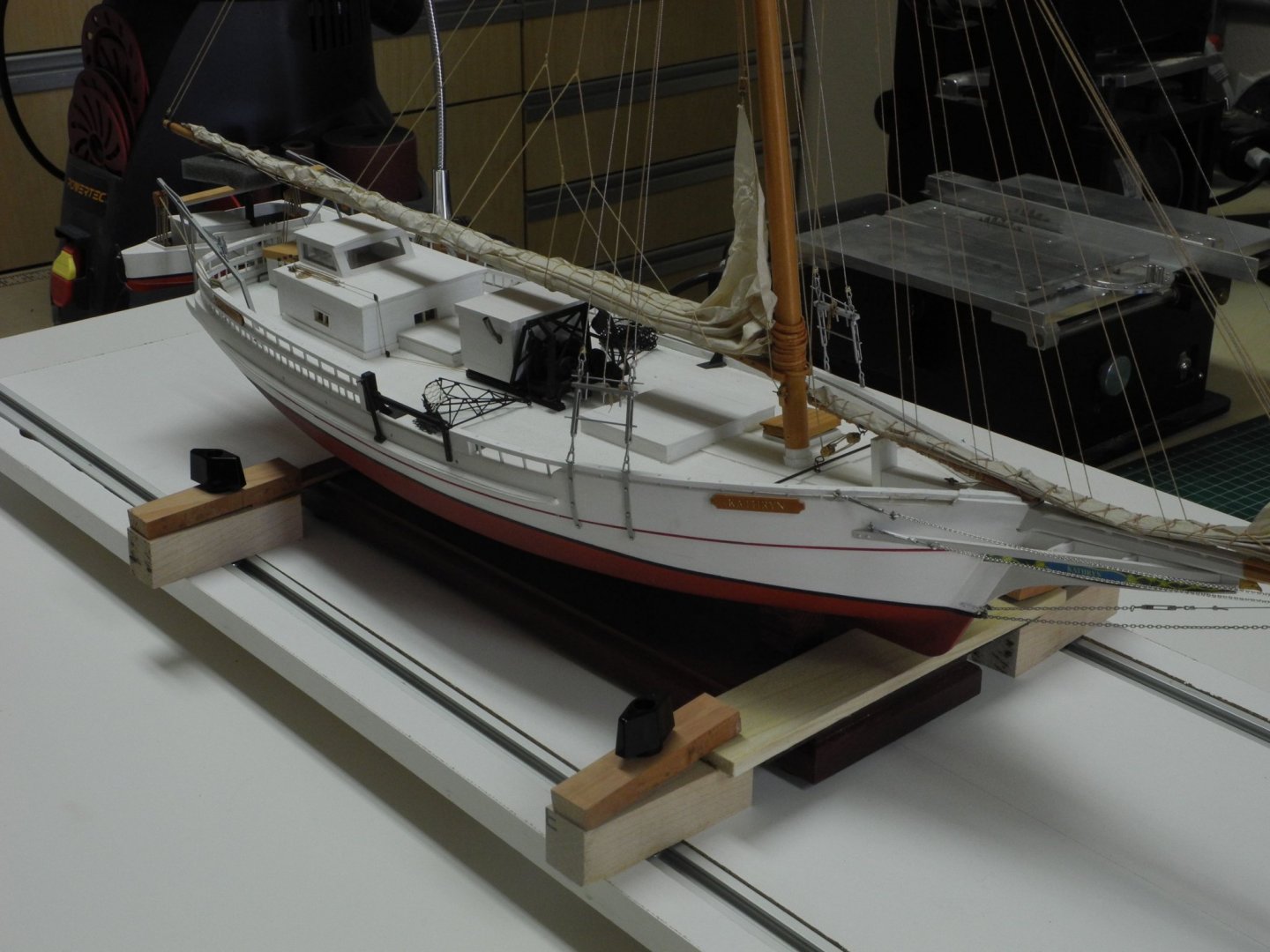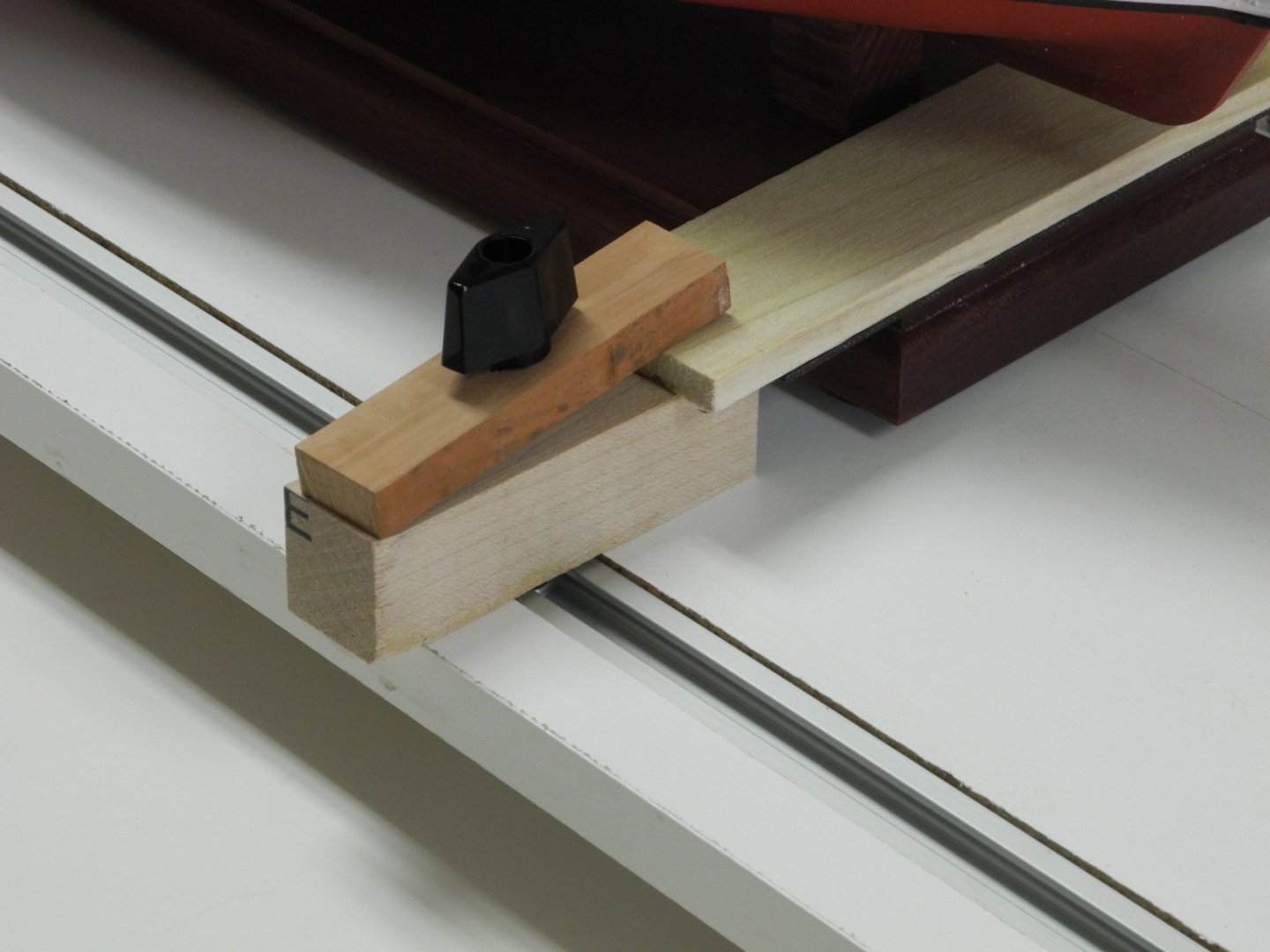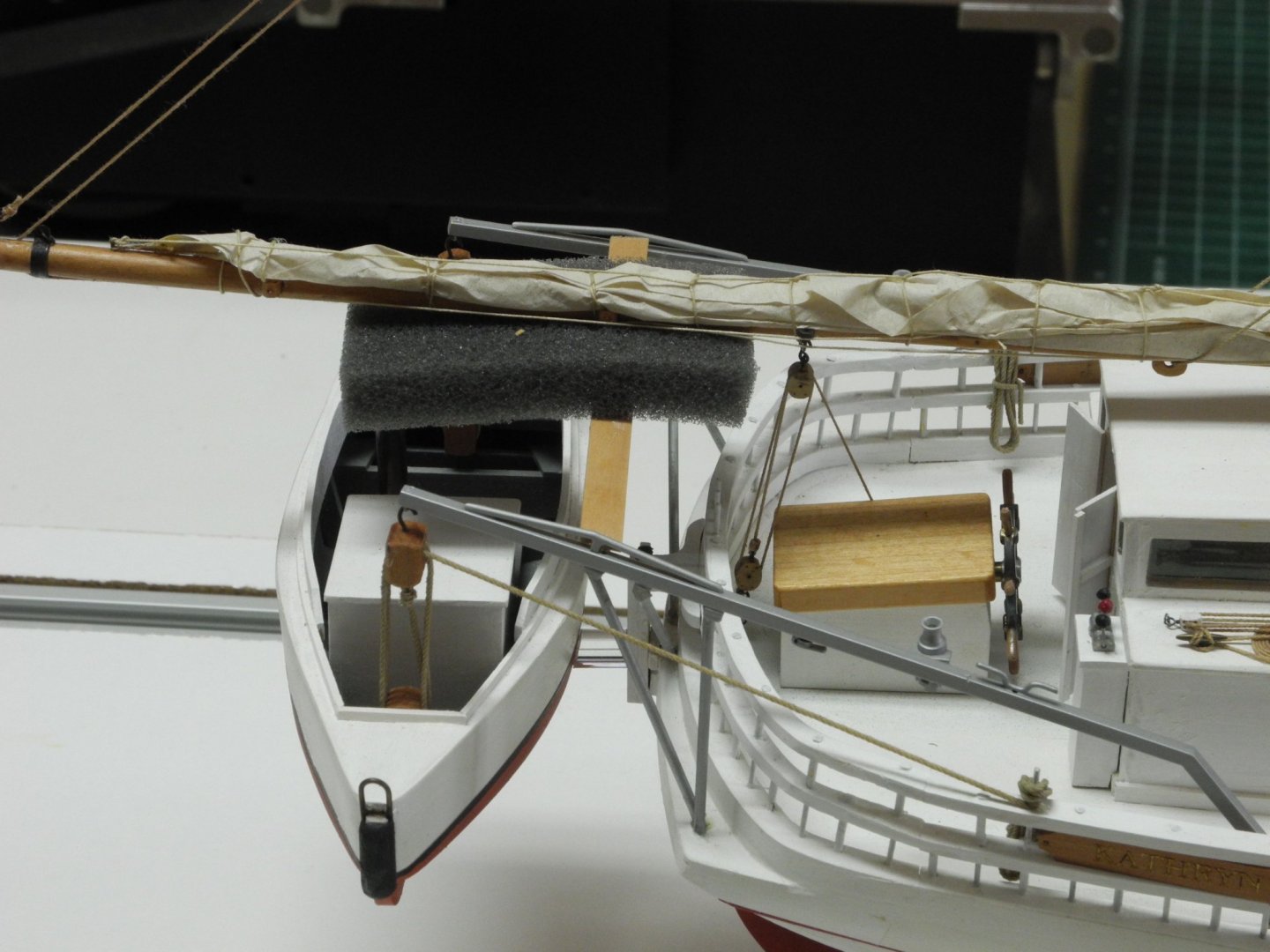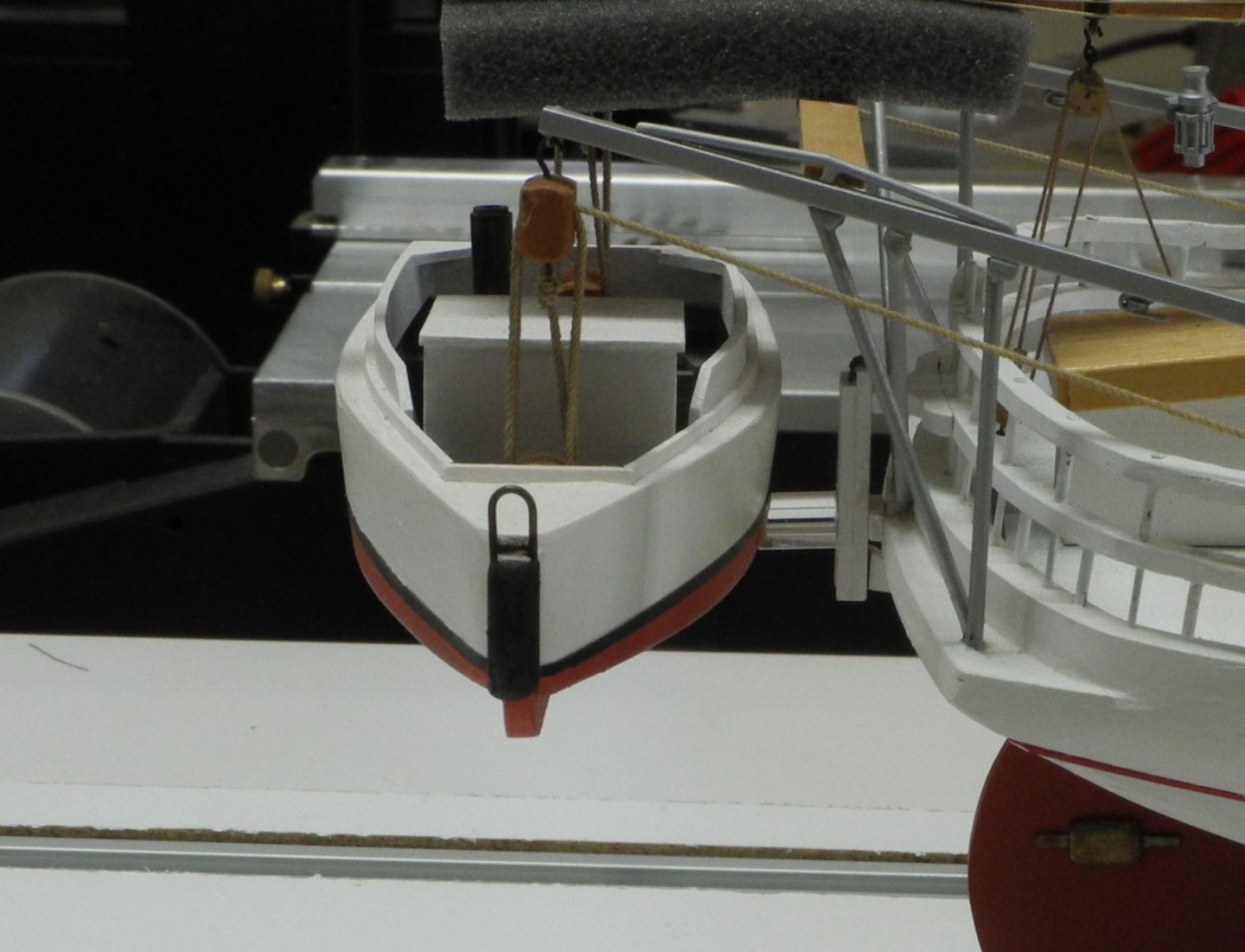-
Posts
1,500 -
Joined
-
Last visited
Content Type
Profiles
Forums
Gallery
Events
Everything posted by Mahuna
-
Hi David - thanks for looking in, I enjoyed this build. I used 2D CAD to develop the framing and some other components, but I don't do any 3D CAD work. Sorry to disappoint. By the way, County Mayo (especially the town of Westport) is one of my favorite areas in Ireland.
- 649 replies
-
- finished
- cross section
-
(and 3 more)
Tagged with:
-

Joshua Slocum's Spray by HIPEXEC
Mahuna replied to HIPEXEC's topic in - Build logs for subjects built 1901 - Present Day
Hi Rich - I've been off the site for quite a while and just saw your build. Great work so far. I'll be following along. -
Very nice work and good progress. I plan to follow along.
- 44 replies
-
- smuggler
- first build
-
(and 2 more)
Tagged with:
-
Hi Rich I've been off the forum for a while due to moving to a new home. Glad to see you're finished your build, and it looks great. Bluejacket has a kit of the Spray. If you don't want to build from a kit, I think you could just buy the plans. http://www.bluejacketinc.com/kits/spray.htm
- 1,133 replies
-
- model shipways
- syren
-
(and 2 more)
Tagged with:
-
Hi Patrick. I've been out of commission from a modeling standpoint for quite a while due to moving to a 'new' home, and have been off the forum for over a month. I was happy to see your recent entry on my first time back - she looks great! Well done.
-
Hi Don - really nice work. When securing a knot, it's better to use matte medium or a diluted white glue to avoid the 'plastic' look. When I don't want any sheen from glue I use Scenic Glue from Woodland Scenics.
- 120 replies
-
- crabbing skiff
- Chesapeake Bay crabbing skiff
- (and 3 more)
-
Hi Doug - very nice work on your Leon. I've been looking in now and then, and just saw your comment on the lumber hatch. One thing you might try is to mix some sawdust from the same wood as the planking with Scenic glue and use it as a filler. Scenic glue (from Woodland Scenics) is a PVA glue that dries without any sheen, so when you use it this way the wood dust visually blends in with the wood around it and flaws are covered really well. I've used this approach with small gaps between planks and it worked for me.
- 108 replies
-
- Finished
- brigantine
-
(and 2 more)
Tagged with:
-

Diana by chriswi - OcCre
Mahuna replied to chriswi's topic in - Kit build logs for subjects built from 1751 - 1800
Nice work, Chris. Keep the updates coming - you're making great progress. -
The original list of free books went fairly quickly. In continuing to get ready for downsizing I'm once again offering the following books free of charge - you just pay the postage. For the time being I'd like to ship a minimum of three books for each request, and will be using PayPal for payment of the postage. Due to time constraints I need to move these books by end of January. Any remaining books will be donated to a local charity. Please PM me if you're interested in any of the following books: Ship Design and Construction The Search for Speed Under Sail 1700-1855, by Howard I. Chappelle No Longer Available Dorothy Elizabeth – Building a Traditional Wooden Schooner, by Roger F Duncan No Longer Available The American Fishing Schooners 1825 – 1935, by Howard I. Chappelle No Longer Available Anatomy of the Ship – The Schooner Bertha L. Downs, by Bud Greenhill and Sam Manning No Longer Available The Building of a Wooden Ship, by Dana A. Story No Longer Available The Baltimore Clipper, by Howard I. Chappelle No Longer Available Masting and Rigging, by Harold A. Underhill No Longer Available The Gaff Rig Handbook, by John Leather No Longer Available The Rigging of Ships (in the Days of the Spritsail Topmast 1600-1720) By R.C. Anderson No Longer Available The Art of Rigging, by George Biddlecombe No Longer Available Ship Modeling Period Ship Modelmaking (an ilIustrated Masterclass), by Philip Reed No Longer Available Rigging Period Fore-and-Aft Craft, by Lennarth Petersson No Longer Available Rigging Period Ship Models, by Lennarth Petersson No Longer Available A Modeler’s Guide to Rigging, by Richard Mansir No Longer Available Ship Models – How to Build Them, by Charles G. Davis The Ship Model Builder’s Assistant, by Charles G. Davis No Longer Available The Built-up Ship Model, by Charles G. Davis Woodworking Big Book of Scroll Saw Woodworking No Longer Available Hand Tools (Skill-building techniques and projects) No Longer Available Table Saw Secrets (Tips, Techniques, Plans, and Projects) No Longer Available Machining Workshop Techniques for Clockmakers and Modelmakers, by W.R.Smith No Longer Available The Model Engineers Workshop Manual, by Geo. H. Thomas No Longer Available Building Simple Model Steam Engines, by Tubal Cain No Longer Available Milling for Home Machinists, by Harold Hall No Longer Available Mini-Lathe for Home Machinists, by David Fenner No Longer Available The Complete Metalsmith (an Illustrated Handbook), by Tim McCreight No Longer Available Workshop Practice Series books: No Longer Available Workholding in the Lathe Simple Workshop Devices Vertical Milling in the Home Workshop Hardening, Tempering, and Heat Treatment Soldering and Brazing Dividing I also have: 8 back issues of Woodsmith Magazine No Longer Available 5 back issues of Home Machining magazines. No Longer Available
-
We'll be downsizing to a smaller house, and there won't be enough room for many of the books I've collected since I started modeling. I'm offering the following books free of charge - you just pay the postage. For the time being I'd like to ship a minimum of three books for each request, and will be using PayPal for payment of the postage. Due to time constraints I need to move these books by end of January. Any remaining books will be donated to a local charity. Please PM me if you're interested in any of the following books: Ships, General American Fishermen, by Albert Cook Church No Longer Available The Charles W Morgan, by John F. Leavitt No Longer Available Pacific Square Riggers, by Jim Gibbs No Longer Available Merchant Sailing Ships 1850-1875, by David R MacGregor No Longer Available A Maritime Archeology of Ships, by Jonathan Adams No Longer Available The History of the Sailing Ship, by ARCO Publishing Ship Design and Construction Sloops & Shallops, by William A. Baker No Longer Available The Search for Speed Under Sail 1700-1855, by Howard I. Chappelle Dorothy Elizabeth – Building a Traditional Wooden Schooner, by Roger F Duncan The American Fishing Schooners 1825 – 1935, by Howard I. Chappelle Sailing Ships, by Colin Mudie No Longer Available Pete Culler on Wooden Boats, Edited by John Burke No Longer Available Small Ships – Benford Design Group Thomas F McManus and the American Fishing Schooners, by W.M.P. Dunne No Longer Available Seventeenth Century Rigging, by R. C. Anderson No Longer Available Ship Modeling William Frederick’s (1874) Scale Journey, by Antonio Mendez C. No Longer Available 2013 Shipwright, Edited by John Bowen and Jean Hood No Longer Available American Ship Models and How to Build Them, by V.R. Grimwood (2 versions) No Longer Available The Cutty Sark, Vols 1 & 2, by C.N. Longridge No Longer Available Building Model Ships from Scratch, by Kent Porter No Longer Available The Art of Ship Modeling, by A. Richard Mansir No Longer Available Models of American Sailing Ships, by Robert E. Peabody No Longer Available
-

Diana by chriswi - OcCre
Mahuna replied to chriswi's topic in - Kit build logs for subjects built from 1751 - 1800
Very nice work, Chris. You're making some real progress now. -

Diana by chriswi - OcCre
Mahuna replied to chriswi's topic in - Kit build logs for subjects built from 1751 - 1800
I agree with Steve - I would use two-part epoxy. The five-minute type would be my choice. A couple of points: when you clamp the piece to the hull you'll find that the wet epoxy is pretty slippery and the piece may want to slide while you're clamping it. Also, the epoxy will tend to run and ooze out of the small holes. This can be cleaned up while it's still wet by washing the unwanted epoxy off with a brush dipped in 90% isopropyl alcohol. You need to make sure you get the unwanted epoxy off before it has cured - after it's cured you'd have to grind it off. Chris - like doing anything for the first time I'd use some scrap pieces for testing until you get familiar with using the epoxy. Epoxy is super strong when cured, so you won't need to use a lot of it. And you're always welcome to come over so we can play around with the epoxy before you put it on your model. -

Diana by chriswi - OcCre
Mahuna replied to chriswi's topic in - Kit build logs for subjects built from 1751 - 1800
Nice work, Chris. I'll be following along, and hope to see it in person sometime. -
Thanks for the suggestion Jack. I'll be driving a small SUV, so won't need to use the seat anchors. Too bad - always like to meet other MSW members.
-
I'll be taking Kathryn to next week's meeting of the San Diego Ship Modelers Guild, and then will be going on to Carlsbad, California - total driving time will be around 12 hours. I'm a little nervous about Kathryn bouncing around in the car for that long, so I had to devise a way to keep her steady in the car. The building board for the Kathryn build is about 6-8 inches longer than the overall length of the model, so I will use that board and I devised a clamping arrangement to keep her steady on the board, as in the following photo. The cross-pieces press down on Kathryn's base, and the surface of the cross-piece which touches the base is lined with a soft rubber padding to avoid scratching the base. The boom is only held from swaying side-to-side by the main sheet, so I wedged a piece of soft foam rubber between the boom and the board that joins the 2 davits. The yawl boat is suspended from the davits by a block configuration and could easily sway back and forth and do some damage to itself and/or the model, so I epoxied a clear acrylic rod between the side of the boat and the bumper at Kathryn's rear. This is a permanent solution, but I thought it was necessary to protect the model during its life - not just for the trip. Some future work still remains for Kathryn - she needs a display case to protect her from dust, dirt, grandchildren, and cleaning ladies. In the meantime I've started the drafting process for the next model, and I'll post a link here when I start a new build log in a month or so. Cheers, everyone!
-
Looks great Rich - stay on the journey! Hope to see you soon.
- 1,133 replies
-
- model shipways
- syren
-
(and 2 more)
Tagged with:
-
Welcome to MSW Chris. It’s good to see another ship modeler here in AZ.
-
Thanks Druxey. I think I'm the one who should be sending appreciation to all of the folks who have been very encouraging along the way.
-
Thanks Jerry. I admire folks like yourself who have actually worked on these boats. I have a good friend who is an experienced waterman (and an excellent modeler) who has been a great source of info during the project. Thanks Will. I think when you see Kathryn in person you'll probably pick out some things that are NOT the best parts!
-
Thanks Patrick - but I don't think I'll be making sails again. Thanks Popeye. The JTL will be interesting when compared to skipjacks. Thanks Gary. Thanks Ed. I've tried to apply what I've learned from watching your work since I started modeling. Thanks Greg. I've actually been thinking that at some point I might offer the Kathryn to CBMM. Thanks John. I guess you could say this is how she looks at the start of each oystering season, before the paint dries.
About us
Modelshipworld - Advancing Ship Modeling through Research
SSL Secured
Your security is important for us so this Website is SSL-Secured
NRG Mailing Address
Nautical Research Guild
237 South Lincoln Street
Westmont IL, 60559-1917
Model Ship World ® and the MSW logo are Registered Trademarks, and belong to the Nautical Research Guild (United States Patent and Trademark Office: No. 6,929,264 & No. 6,929,274, registered Dec. 20, 2022)
Helpful Links
About the NRG
If you enjoy building ship models that are historically accurate as well as beautiful, then The Nautical Research Guild (NRG) is just right for you.
The Guild is a non-profit educational organization whose mission is to “Advance Ship Modeling Through Research”. We provide support to our members in their efforts to raise the quality of their model ships.
The Nautical Research Guild has published our world-renowned quarterly magazine, The Nautical Research Journal, since 1955. The pages of the Journal are full of articles by accomplished ship modelers who show you how they create those exquisite details on their models, and by maritime historians who show you the correct details to build. The Journal is available in both print and digital editions. Go to the NRG web site (www.thenrg.org) to download a complimentary digital copy of the Journal. The NRG also publishes plan sets, books and compilations of back issues of the Journal and the former Ships in Scale and Model Ship Builder magazines.






